A Large Rare British Celtic Apotropaic Sandstone Head of ‘Cernunnos’
A Large Rare British Celtic Apotropaic Sandstone Head of ‘Cernunnos’ the Horned Deity with Typical Eyes Triangular Nose and Slit Mouth
1st Century B.C - 1st Century A.D
Size: 47.5cm high, 39cm wide, 33cm deep - 18¼ ins high, 15¼ ins wide, 13 ins deep / 52cm high - 20.5cm high (with base)
1st Century B.C - 1st Century A.D
Size: 47.5cm high, 39cm wide, 33cm deep - 18¼ ins high, 15¼ ins wide, 13 ins deep / 52cm high - 20.5cm high (with base)
A Large Rare British Celtic Apotropaic Sandstone Head of ‘Cernunnos’ the Horned Deity with Typical Eyes Triangular Nose and Slit Mouth
1st Century B.C - 1st Century A.D
Size: 47.5cm high, 39cm wide, 33cm deep - 18¼ ins high, 15¼ ins wide, 13 ins deep / 52cm high - 20.5cm high (with base)
1st Century B.C - 1st Century A.D
Size: 47.5cm high, 39cm wide, 33cm deep - 18¼ ins high, 15¼ ins wide, 13 ins deep / 52cm high - 20.5cm high (with base)
‘Cernunnos’ was a horned god and one of the most ancient Celtic deities. He predates Roman influence in Western Europe with images occurring from as early as the 4th century B.C. Known as the ‘Lord of the Animals’ essentially he was a god symbolising fertility and fecundity in nature. As the patron god of hunters his horned head was an appropriate symbol for a people who decapitated their enemies and revered the head, a people given to fighting, cattle lifting and hunting. The horned god was their leader in war, symbolic of virility, lawgiver in times of peace, protector in times of danger. He was an all purpose tribal god and his deep rooted nature and association with fertility made him unacceptable to emerging Christianity who destroyed any maternalistic traces of his cult whenever they could. The Romans, however, took great care not to antagonise the ‘god of place’, the named warrior of the Celts, and equated him with a member of the more familiar classical pantheon such as Pan, or as an armed warrior equivalent to Mars.
In Dr. Anne Ross’s ‘Pagan Celtic Britain, 1967’, she devotes a chapter to ‘The Horned God in Britain’ discussing the cult of the human head, and has been seen to be most widespread, typical and enduring of Celtic cults. Cernunnos was widely depicted in Celtic art over a wide landmass from Northern Italy, Romania, France and Denmark to Great Britain and Ireland.
Celtic cult images of Cernunnos from the pre-Roman Iron Age, are rare, one such is that on the 1st century B.C ‘Gundestrup Cauldron’. In the Roman period by contrast, more than fifty representations of this god are recorded, mainly clustered in north-east Gaul, see: ‘Relief of Cernunnos’ from Rheims, France, 1st - 2nd century A.D, Musée Saint-Rémi, Rheims, sitting crossed legged on a dais, a torc around his neck, pouring money or corn from a bag to feed a small bull and a stag at his feet, flanked by the classical gods Apollo and Mercury. A great deal of Celtic religious imagery appears for the first time in the Roman era influenced by Roman forms of expression. They adopted Roman ways of expressing the divine and Celtic perceptions of the supernatural became defined with much greater clarity than before.
In Dr. Anne Ross’s ‘Pagan Celtic Britain, 1967’, she devotes a chapter to ‘The Horned God in Britain’ discussing the cult of the human head, and has been seen to be most widespread, typical and enduring of Celtic cults. Cernunnos was widely depicted in Celtic art over a wide landmass from Northern Italy, Romania, France and Denmark to Great Britain and Ireland.
Celtic cult images of Cernunnos from the pre-Roman Iron Age, are rare, one such is that on the 1st century B.C ‘Gundestrup Cauldron’. In the Roman period by contrast, more than fifty representations of this god are recorded, mainly clustered in north-east Gaul, see: ‘Relief of Cernunnos’ from Rheims, France, 1st - 2nd century A.D, Musée Saint-Rémi, Rheims, sitting crossed legged on a dais, a torc around his neck, pouring money or corn from a bag to feed a small bull and a stag at his feet, flanked by the classical gods Apollo and Mercury. A great deal of Celtic religious imagery appears for the first time in the Roman era influenced by Roman forms of expression. They adopted Roman ways of expressing the divine and Celtic perceptions of the supernatural became defined with much greater clarity than before.
Ex Private English collection
A Large Rare British Celtic Apotropaic Sandstone Head of ‘Cernunnos’

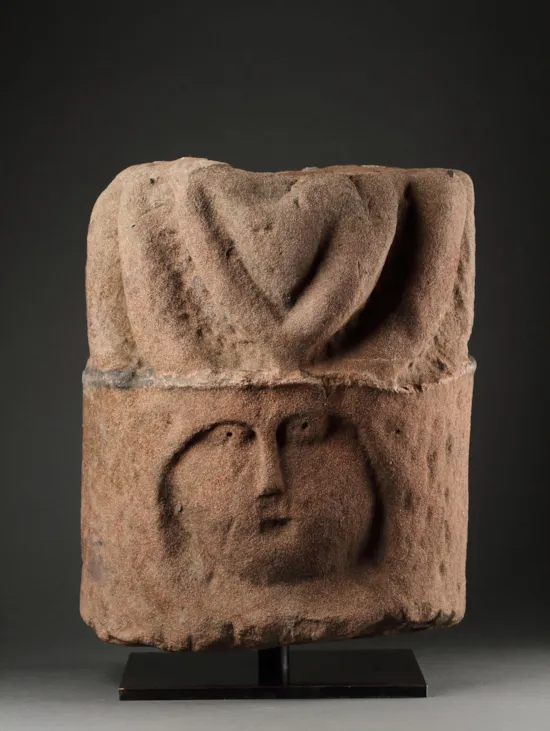
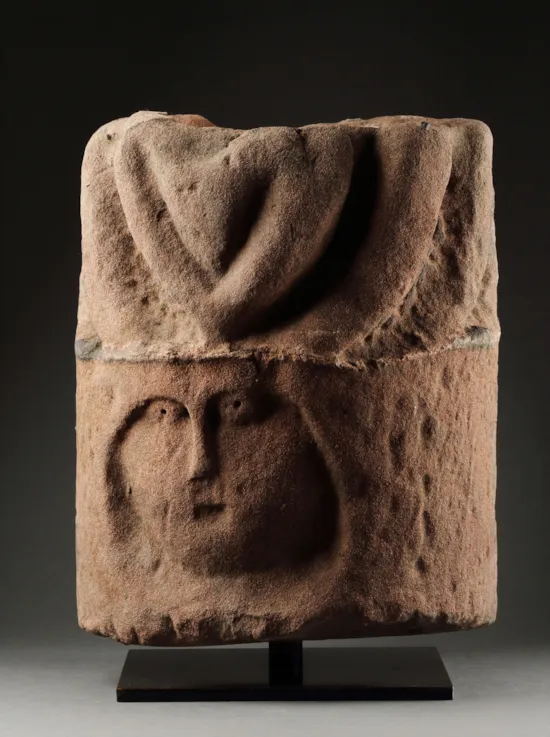
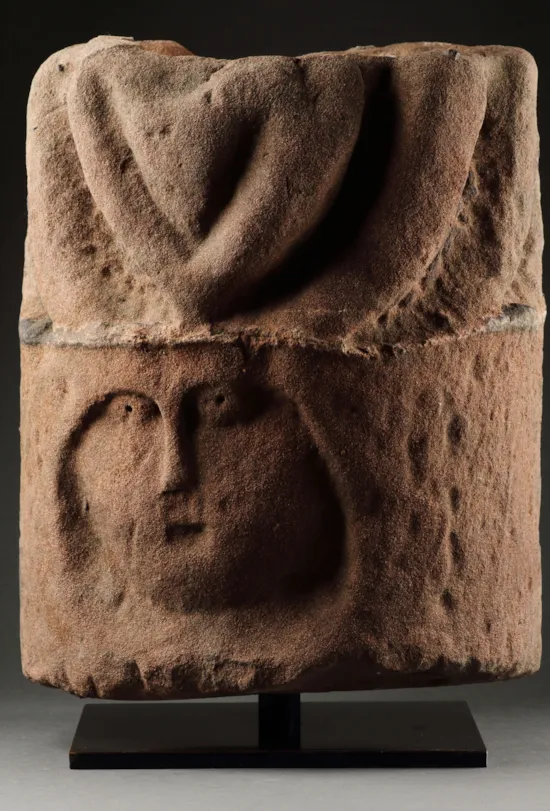
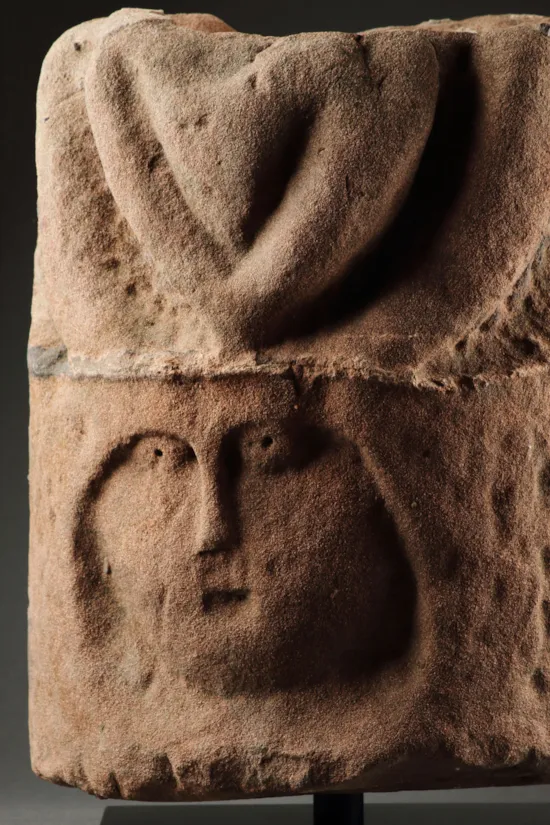
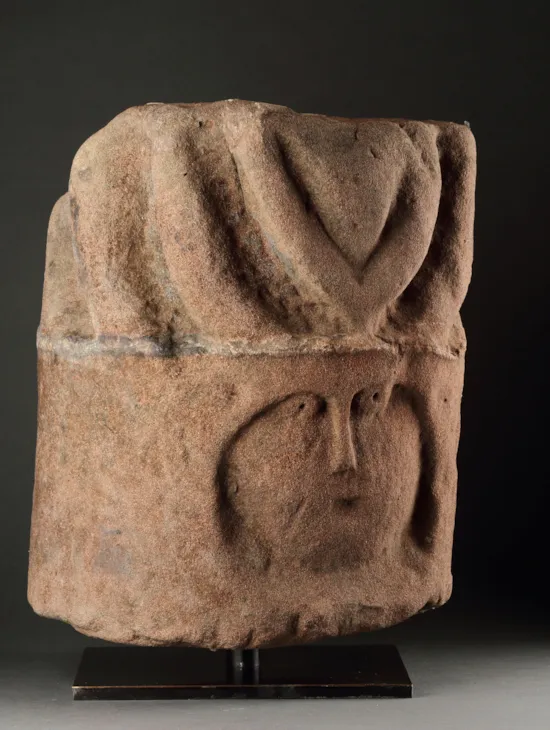
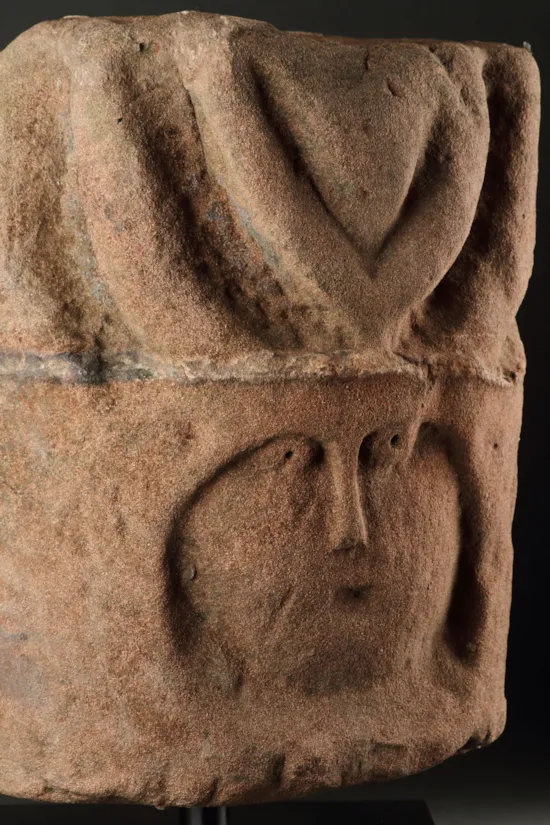
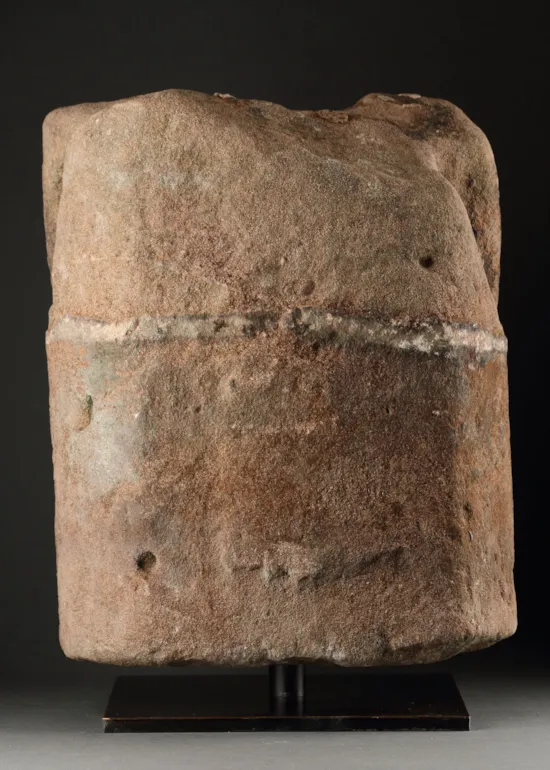
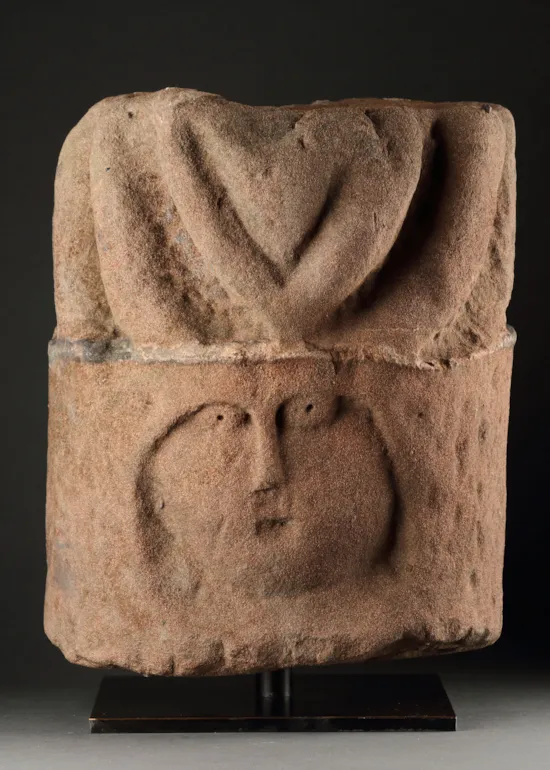










YOU MAY ALSO LIKE



